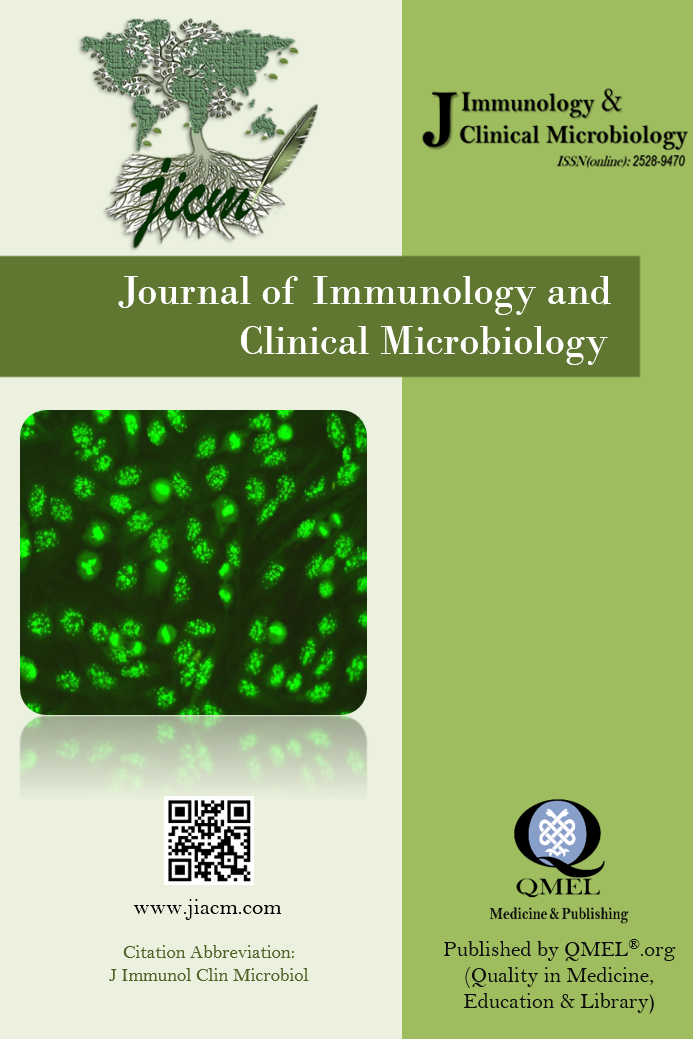Differentiation between vaccinal and field strains of E. coli using phenotype and genotype characterization
Background: E. coli infection is considered as an important bacterial problem associated with significant economic losses and usually associated with a variety of disease conditions, including acute septicaemia, haemorrhagic enteritis, pericariditis, salpingitis and complicated air saculitis. These considerations suggest that control of E. coli by vaccination could be of great value especially live vaccine that based on defined mutations that impair and non-revering virulence. Material and Methods: Wild type O78 strain, Live O78 aroA gene deleted vaccine and Live O78 crp gene deleted vaccine were used to accomplish this study. Phenotypic characterization was adopted by studying the cultural, biochemical and serological properties. Also genotypic characterization was studied for 16S rRNA, aroA and crp genes. Results: Growth pattern on different media differed among the used strains as the wild type and Δ aroA mutant were nearly similar while the Δ crp mutant strain was greatly differed. Biochemically the difference between the wild-type and Δ aroA mutant was inability of mutant strain to produce arginine dihydrase (ADH) and fermentation of saccharose. On the other hand the Δ crp mutant failed to produce ADH and to ferment any of the carbohydrates except glucose. A successful amplification of the 16S rRNA gene at 585 bp was detected with the all tested strains while was 1206 bp with only wild type and Δ crp mutant strain when aroA gene primers were used. Regarding crp genes, the amplified products was at 1029 bp with the wild and Δ aroA mutant but not with Δ crp mutant strains. Conclusion: Findings of this study prove the use of methods based on molecular techniques like PCR to differentiate between different types of E. coli either wild or vaccinal mutant type strains. Also it may help in exclusion or proving the return back to virulence of the mutant vaccinal strains.
Keywords:
E. coli O78, chickens, phenotypic characterization genotypic characterization, wild and vaccinal mutant strains,
___
- 1. De Silveira WD, Lancellotti M, Ferreira A, Solferini VN, De Castro AFP, et al. Determination of the clonal structure of avian E. coli strains by isoenzyme and ribotyping analysis. J Vet Med. B, Infectious diseases and Veterinary Public Health. 2003; 50: 63-69.
- 2. Prukner E. Frequency and epidemiological significance of virulent Escherichia coli strains in dead poultry. Vet Archive. 1986; 56: 227-237.
- 3. Cloud S S, Rosenberger JK, Fries PA, Wilson RA, Odor EM. In-vitro and in-vivo characterization of avian Escherichia coli I: serotypes, metabolic activity and antibiotic sensitivity. Avian Dis. 1985; 29: 1084 -1093.
- 4. Chart H, Smith HR, La Ragione R M and Woodward M J. An investigation into the pathogenic properties of Escherichia coli strains BLR, BL21, DH5α, and EQ1. J Appl Microbiol. 2000; 89: 1048 - 1058.
- 5. Formmer AP , Freildlin R , Litner G, Chaffer M and Heller ED. Expermintal vaccination of young chickens with alive non-pathogenic strain of Escherichia coli. Avian Path. 1994; 23: 425-433.
- 6. Fasaei BN, Salehi TZ, Tadjbakhsh H, Firuzi R, Casadesus J. Construction of genetically defined aro A mutant of a native E. coli O78:K80 isolated from avian colibacillosis, in Iran. Comp Clin Pathol. 2009; 18: 69-75.
- 7. Peighambari SM, Gyles CL. Construction and characterization of avian E. coli cya crp mutants. Avian Dis. 1998; 42: 698-710.
- 8. Ghanbarpour R, Salehi M, Oswald E. Virulence genotyping of E. coli isolates from avian cellulites in relation to phylogeny. Comp Clin Pathol. 2010; 19: 147-153.
- 9. Sojka WJ. In "Escherichia coli in domestic animals and poultry" 1st edd. Commonwealth Agriculture. Bureau, Farnham, Royal Buck, England. 1965; pp. 104-156.
- 10. Tonu NS, Sufian MA, Sarker S, Kamal MM, Rahman MH, and Hossain MM. Pathological study on colibacillosis in chickens and detection of E. coli by PCR. Bangl J Vet Med. 2011; 9: 17-25.
- 11. Vidotto M C, Muller E E, De Freitas J C, Alfieri A A, Guimaraes I G, and Santos D S. Virulence factors of avian E. coli. Avian Diseases. 1990; 34: 531-538.
- 12. Gross R J. Acute enteritis P.458-476. In Topley and Wilson's Principles of Bacteriology, Virology and Immunity. 1984; 7th Ed. Vol.3. Bacterial Diseases Butley, Tanner Ltd. Forme.
- 13. Dong XY, Li WH, Zhu JL, Liu WJ, Zhao MQ, Luo YW, et al. Detection and differentiation of wild-type and vaccine strains of canine distemper virus by a duplex reverse transcription. PCR. IJVR. 2014; 16: 172-175.
- 14. Kariyawasam S. Construction, characterization and evaluation of the vaccine potential of three genetically defined mutants of avian pathogenic E. coli. Avian Dis. 2004; 48: 287-299.
- 15. Willis G and Cook WY. A comparative study of API, Encise and conventional methods. Med Technologist. 1975; ed. 5:4.
- 16. Hasina B. Enteropathogenic characterization of E. coli isolated from diarrhoeic calves and their antibiogram study. M.S. thesis, Department of Microbiology and Hygiene, BAU, Mymensingh, 2006; p. 68.
- 17. Khatun MN, Mahbub ATM, Ahmed S, Parvej MS, Akhter S, Ansari WK, et al. Frequency of drug resistant E. coli isolated from commercial broiler chicken in Bangladesh. Int J Nat Soc Sci. 2015; 2: 1-5.
- Yayın Aralığı: Yılda 4 Sayı
- Başlangıç: 2016
- Yayıncı: Erkan YULA
